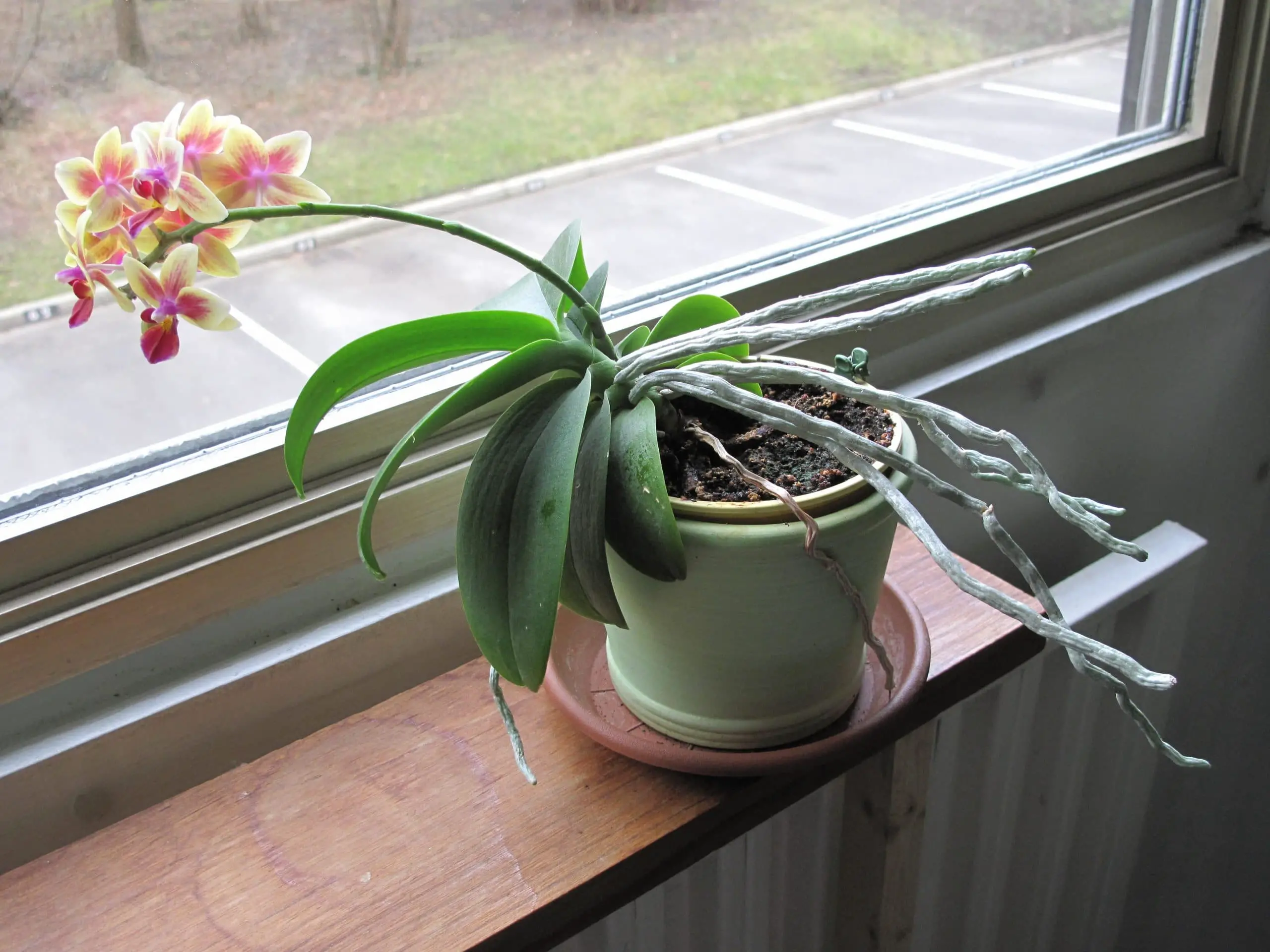

Orchid growing towards the light.
Have you heard of etiolation? Perhaps you have seen an etiolated plant, or you have had one yourself, and you have not known that this was what was happening to it. It is a very striking reaction that all those who have in places where they do not receive the light they need have.
The worst is it can happen to any type of plant: cacti, trees, palm trees,… In some it can be corrected more easily than in others, but what I will tell you is that the easiest thing to do is to prevent it from happening.
What is etiolation?


Image – Wikimedia/Chiswick Chap
Etiolation, in simple words, is the “stretch” of a plant. As I mentioned at the beginning, it occurs when it grows in areas where there is little light, or where there is more powerful light than it usually receives (for example, if we have an indoor plant with little light and it detects the reflection of the sun on it). a window frame, it will grow towards this reflection).
The problem with all this is that this stretch implies a “thinning” of the part that is stretched (leaf, stem). Therefore, sooner or later we will see that stem lose strength and bend because it cannot fight gravity. This is why it turns out to be a rather serious problem, since getting it to return to normal development takes time, and sometimes it can’t even be achieved unless that etiolated part is pruned.
What are its effects?
If we take into account that all plants require light to grow and have a good development, we can suspect how important it is for them to receive the amount of light they require at all times. Without light they cannot perform the photosynthesis, and therefore, they do not grow, nor do they flourish, much less bear fruit.
At first glance, what most attracts our attention is the elongation of the stem and/or leaves. But there are other effects that we must also know about, which are:
- loss of color. They go from being a healthy green to a whitish-green or yellowish-green, since they produce less chlorophyll (remember that they need light to produce it).
- The internodes are longerwhich implies that the stem will have fewer leaves than it should.
- Stems lose strength and may bendwhich is due to the weakening of the cell wall.
- In certain cases, we can also see that the new leavesin case they produce them, are smaller than they should be.
How can it be prevented?


Now that we know that etiolation occurs due to lack of light, let’s talk about how it can be prevented. And, well, the short answer is simple: you have to put the plants in the place where they can develop welland for this it is necessary to know if they are of Shadows o Of soil. But of course, what happens, for example, with the seedbeds that we can have inside the house? Or with those plants that, although we know they want sun -like many cacti and succulents-, we have indoors?
Well, in these cases, what we will do is gradually expose them to direct sunlight. We have to be very patient with this, because If we put them in direct sunlight suddenly, they will burn. Therefore, I recommend following these steps:
- During the first week, we will expose them to direct sun for about 30-60 minutes in the early morning, and then we will put them in semi-shade.
- During the second, we will increase the exposure time by about 30-60 minutes.
- And so on for the next few months.
Now we have to see how they react: If they begin to have spots that they did not have before, we will have to expose them more slowly to direct sunlight.
How to correct etiolation?
Or in other words: how can we recover an etiolated plant? The most important thing is that we know that it’s going to take timeMore or less, but we need to be patient. Once we are clear about this, we can take action; that is, we will get down to work to try to get it to grow normally again.
And how is that done? Well, following the steps mentioned above; that is: what it is about is exposing them little by little and gradually to direct sunlight if they need to be in a sunny place, or in semi-shade if what they need is simply to be in a place where there is more light.
In the event that we have, for example, a highly etiolated plant, such as a globular cactus that has suddenly started to grow vertically, it may be necessary to prune that etiolated part so that it has a chance to develop well.
I hope it has been useful to you.

